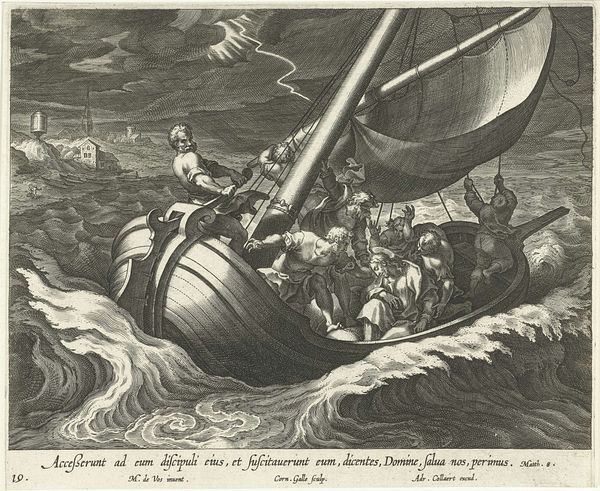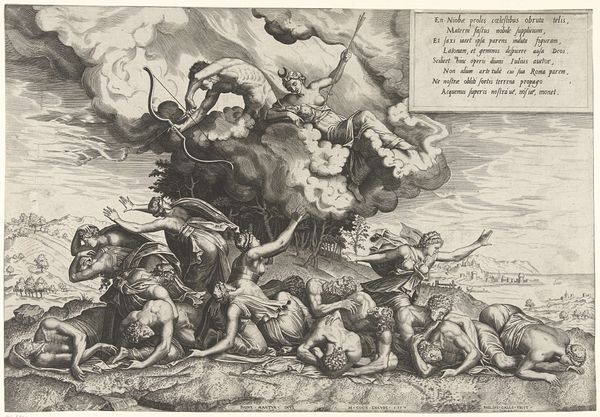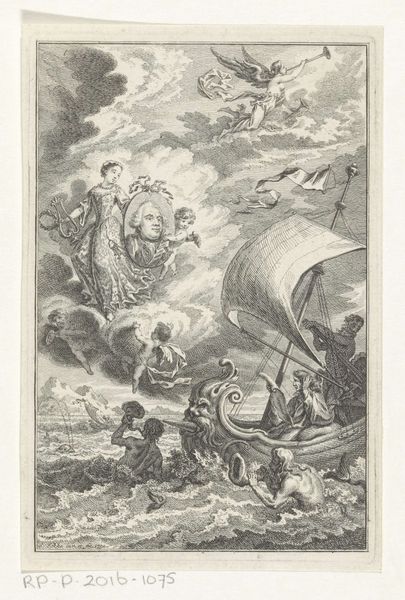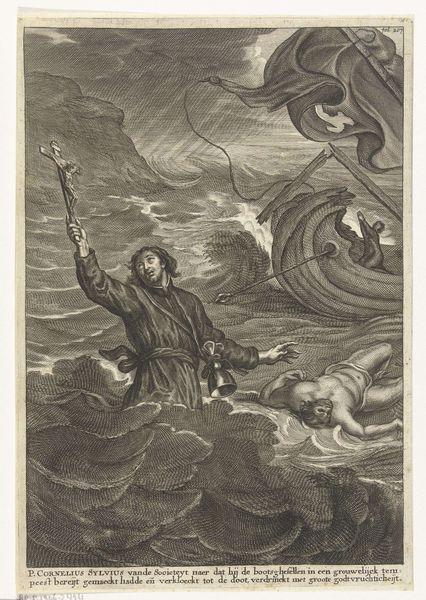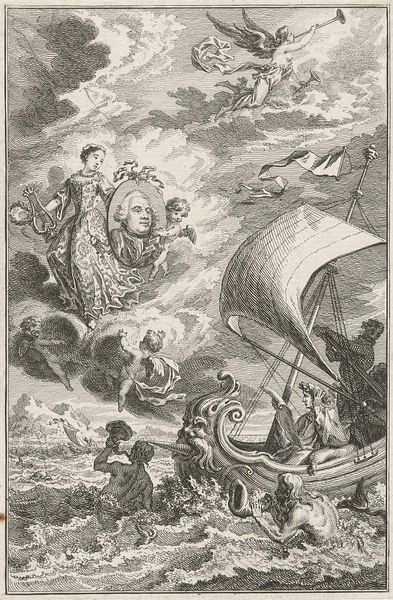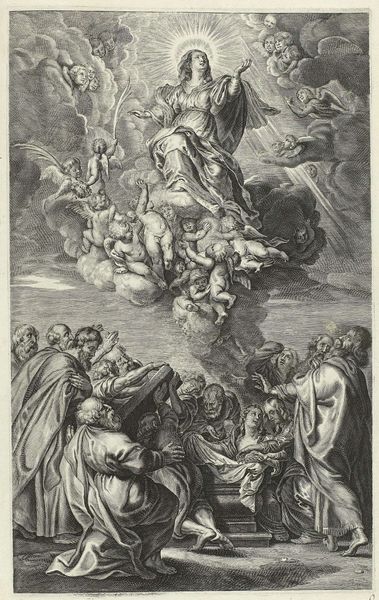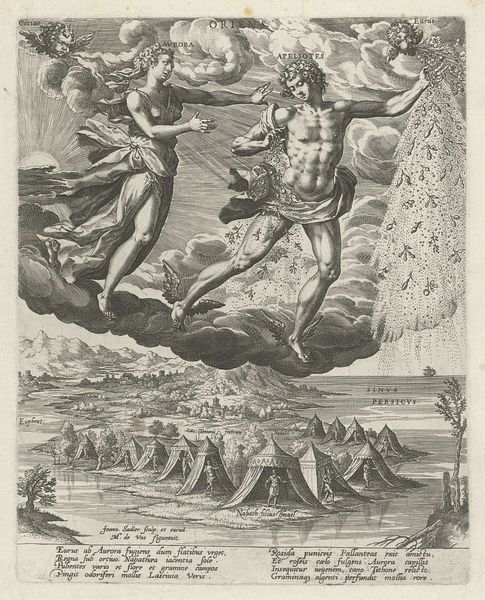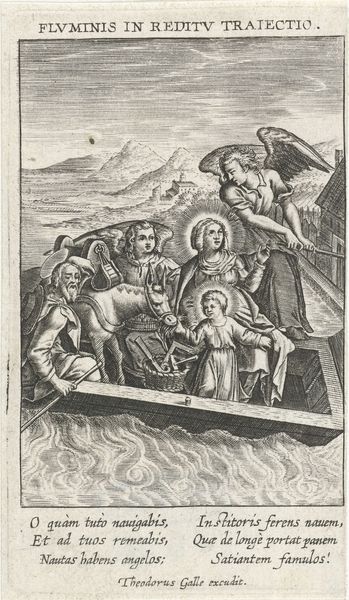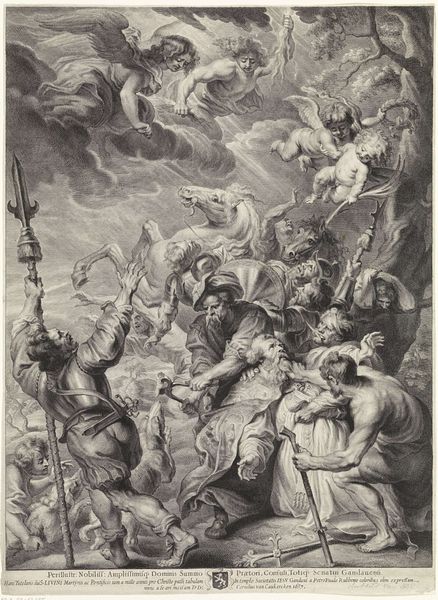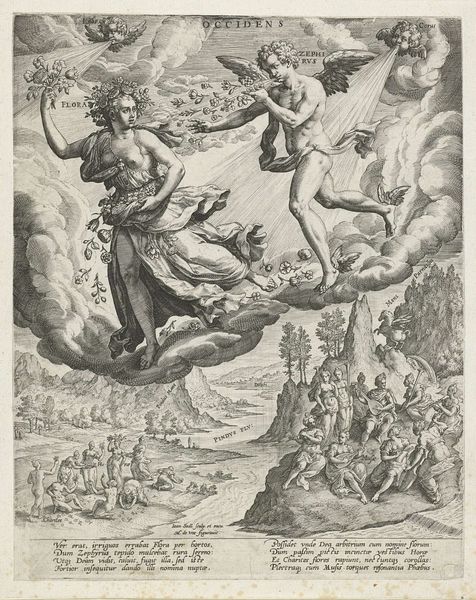
print, engraving
#
narrative-art
# print
#
old engraving style
#
mannerism
#
history-painting
#
engraving
Dimensions: height 244 mm, width 200 mm
Copyright: Rijks Museum: Open Domain
Curator: The Rijksmuseum holds this engraving, dating back to between 1582 and 1584. It's entitled "Jona wordt door de vissers overboord gegooid", made by Johann Sadeler I. Editor: Immediately striking. It's churning, chaotic; the bodies seem tossed about as carelessly as the waves. What an extraordinary scene of upheaval. Curator: Indeed. The artist masterfully employs the engraving technique to depict this dramatic biblical narrative, creating a dynamic composition of figures and turbulent seas. It shows Jonah being thrown overboard. The materiality itself—the copperplate, the ink, the very act of incising—becomes part of the storytelling, representing themes of creation and divine will. Editor: Considering its production, how did this piece circulate at the time? The act of reproduction using the printmaking medium expands the imagery beyond a single wealthy patron. Curator: Absolutely. Prints democratized art, disseminating stories like this one to a broader audience. Think about the role such prints played in shaping the visual culture of the time and how social, political, and even religious movements could adopt it for wider audiences. Editor: It also highlights the artist’s labor and workshop practices. How would multiple artists in the workshop cooperate on engraving such a piece? Curator: In Sadeler's workshop, the division of labor would have been critical. Apprentice artists might prepare the plates, while the master engraver executed the final image, contributing to the larger system of artisan production. Editor: Knowing this artwork is housed at the Rijksmuseum encourages the questions, 'how do institutions choose which stories and histories get told', and 'how does the art world celebrate and preserve different narratives and materials for the future?’ Curator: Very valid. Museums inevitably shape public perceptions. Considering pieces like this makes one ponder about its place within larger narratives of art history, commerce and culture. Editor: Reflecting on the print's creation and institutional life adds a lot of layers. Thanks! Curator: Likewise! The intersection of faith, artistry, and materiality truly resonates.
Comments
No comments
Be the first to comment and join the conversation on the ultimate creative platform.

